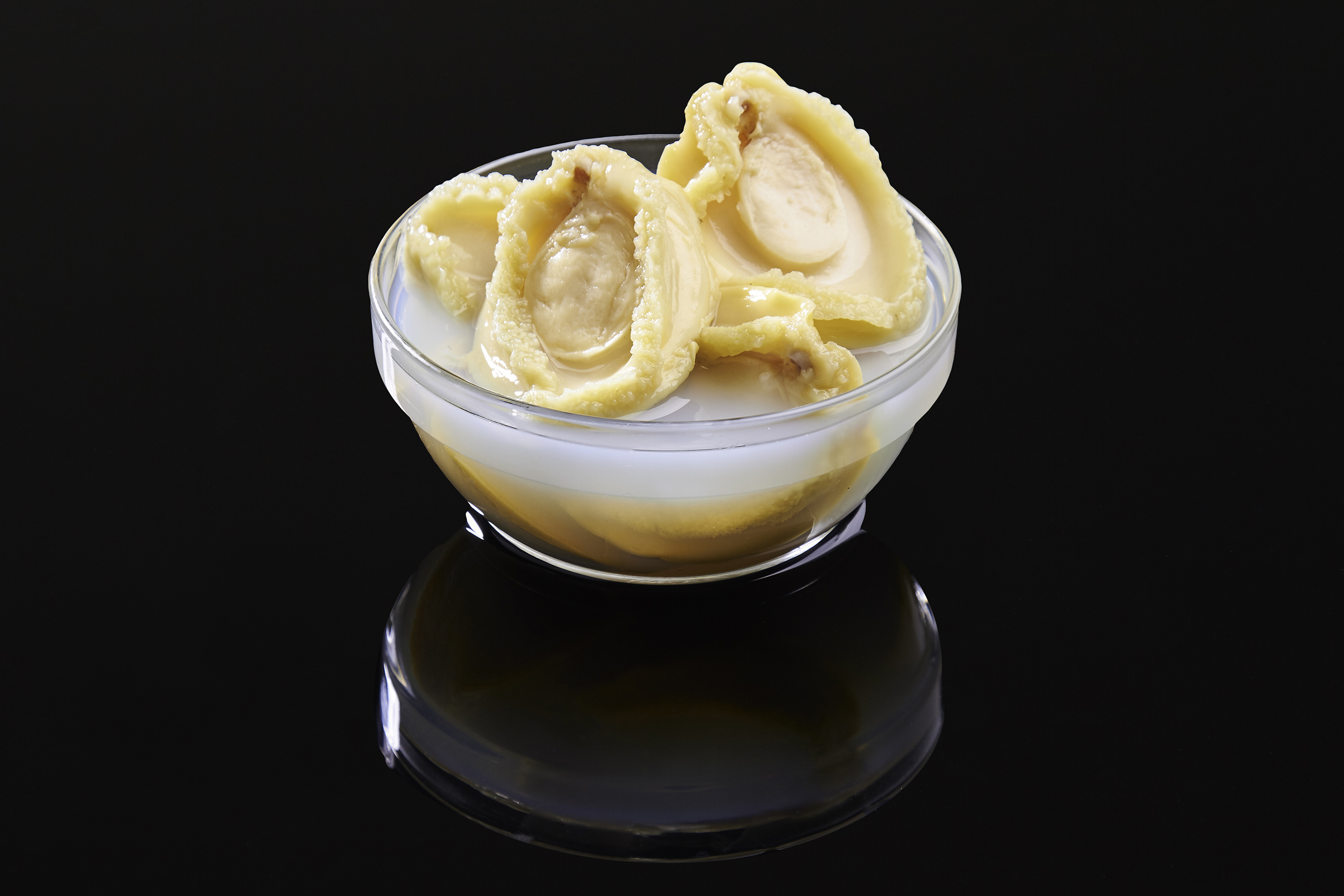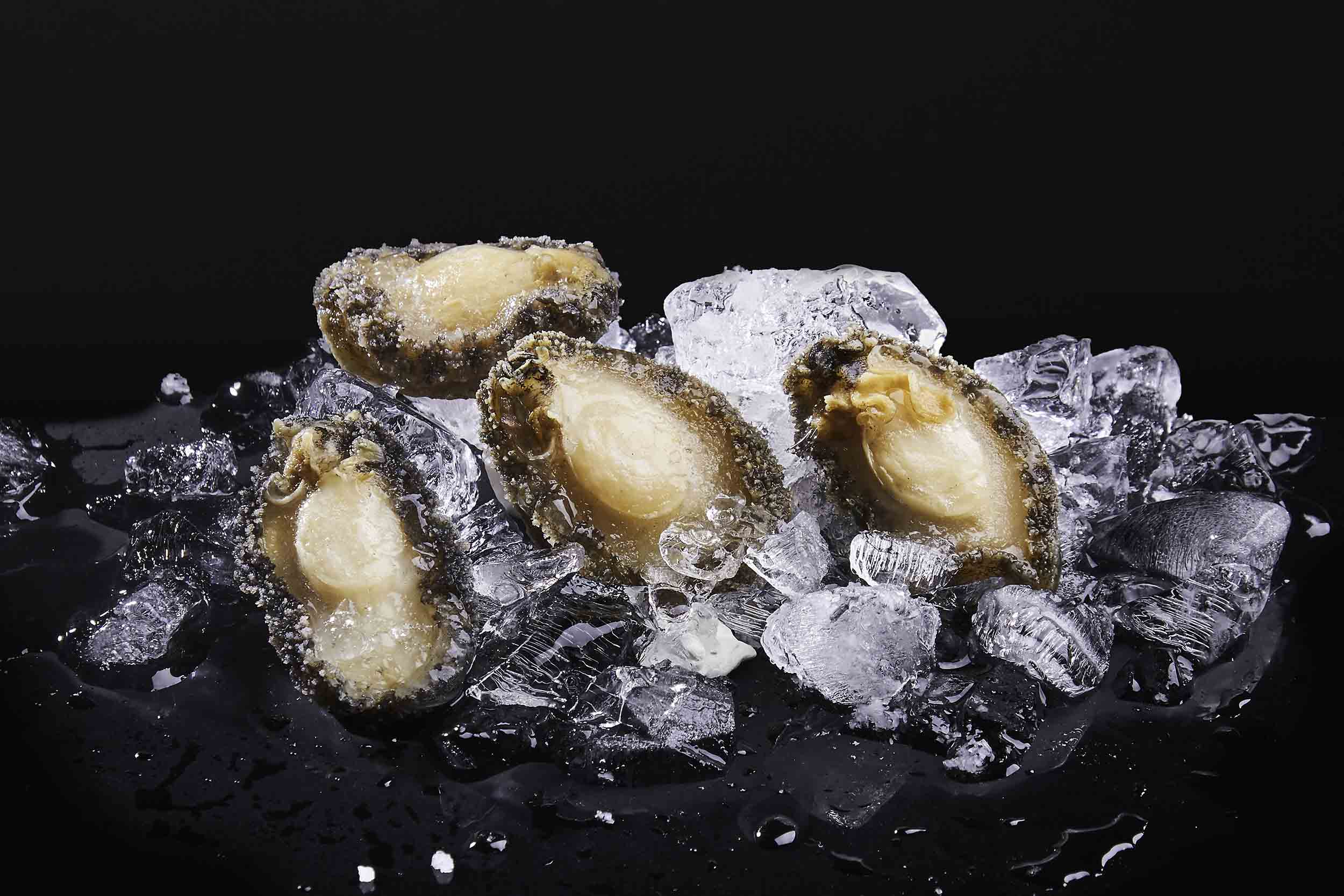Abalone
Abalone is a gastropod mollusk that lives in coastal saltwater. A member of the Haliotidae family, it ranges in size from 4 to 10 inches. Like other univalve snails, it has a single shell on top and uses a large foot to cling to rocks and eat algae. The abalone shell is flat and spiral-shaped with several small holes around the edges. Its other names include ear shells and sea ears because of its shell shape. The interior of the shell is an iridescent mother of pearl (nacre) pattern that is as prized as the meat it protects.
The popularity of abalone led to overfishing and nearly brought the shellfish to extinction. Both white and black abalone that live off the California coast are on the endangered species list and it is illegal to gather wild abalone from the oceans in many parts of the world. Due to careful management practices and strict harvesting regulations, wild abalone populations are making a comeback. Farmed abalone is increasingly available.

How to Cook Abalone
To prepare abalone, it needs to be shucked, cleaned, and tenderized to avoid a rubbery texture. A flat wooden spatula helps release the meat from the shell, where it’s attached by a firm muscle. Before shelling, abalone may be soaked, blanched, or frozen. The viscera, black edges, and tough outer skin are typically removed—though edible, these parts are often discarded for taste and texture.





